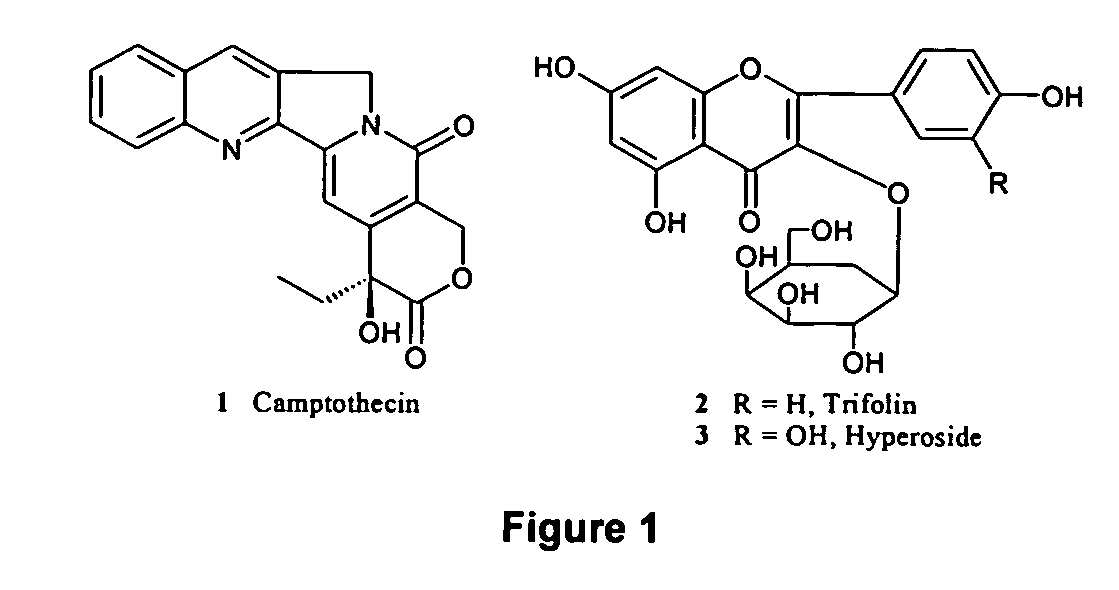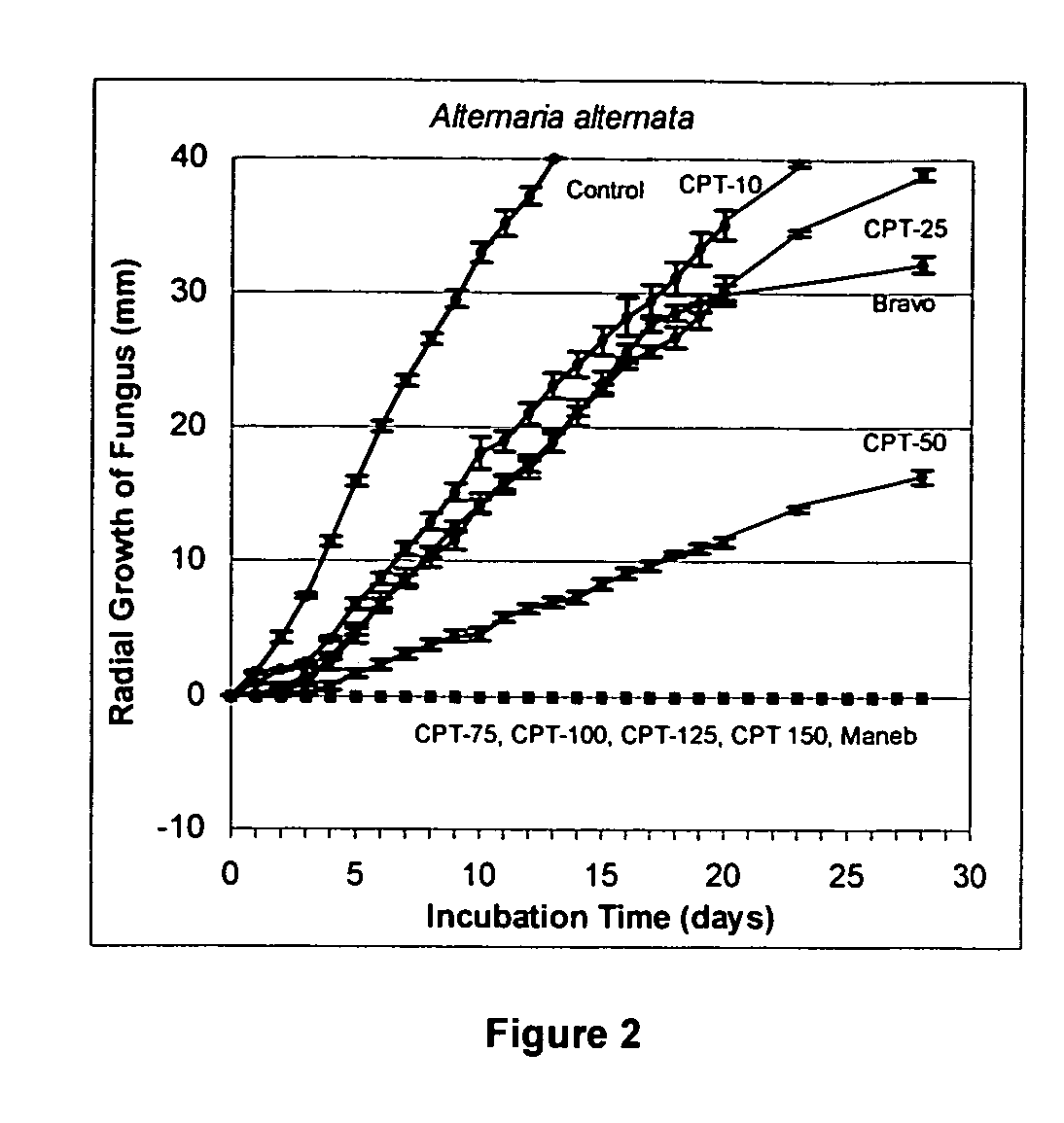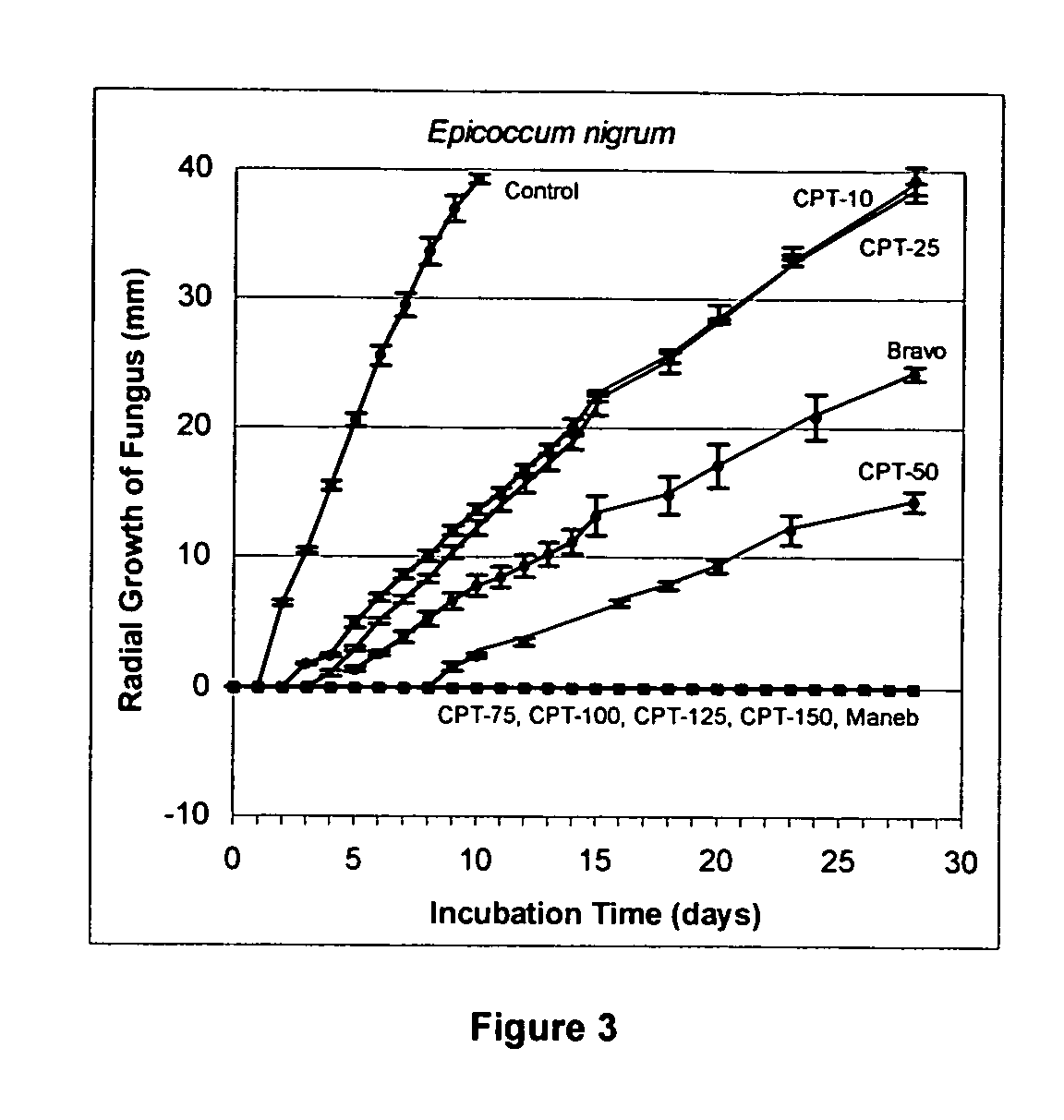Methods for inhibiting fungal pathogen infestation and propogation
- Summary
- Abstract
- Description
- Claims
- Application Information
AI Technical Summary
Benefits of technology
Problems solved by technology
Method used
Image
Examples
Embodiment Construction
[0067] The present invention will be described in relation to plant pathology, but may also have medical applications and be extended to use in the food industry.
[0068] The present inventors have effected unprecedented antifungal activity through use of CPT, trifolin, and hyperoside. Tests were conducted against five recently isolated fungi (molds) from C. acuminata.
[0069] A. Extraction Procedures.
[0070] Melting points were measured with a MEL-TEMP capillary melting point apparatus and were uncorrected. Optical rotations were determined on a JASCO DIP-370 digital polarimeter. UV and IR were recorded on a Hewlett-Packard 8435 spectrometer and an ATI Mattson Genesis Series FTIR spectrometer, respectively. NMR experiments were performed on a Varian Unity Plus 600 MHz spectrometer and NMR data are reported as δ (ppm) value, referenced to DMSO-d6. Silica gel (70-723 mesh, 60Å, Aldrich) and RP Silica gel (RP-18, Aldrich) were used for low-pressure chromatography. TLC was performed on s...
PUM
| Property | Measurement | Unit |
|---|---|---|
| Density | aaaaa | aaaaa |
| Density | aaaaa | aaaaa |
| Density | aaaaa | aaaaa |
Abstract
Description
Claims
Application Information
 Login to View More
Login to View More - R&D
- Intellectual Property
- Life Sciences
- Materials
- Tech Scout
- Unparalleled Data Quality
- Higher Quality Content
- 60% Fewer Hallucinations
Browse by: Latest US Patents, China's latest patents, Technical Efficacy Thesaurus, Application Domain, Technology Topic, Popular Technical Reports.
© 2025 PatSnap. All rights reserved.Legal|Privacy policy|Modern Slavery Act Transparency Statement|Sitemap|About US| Contact US: help@patsnap.com



